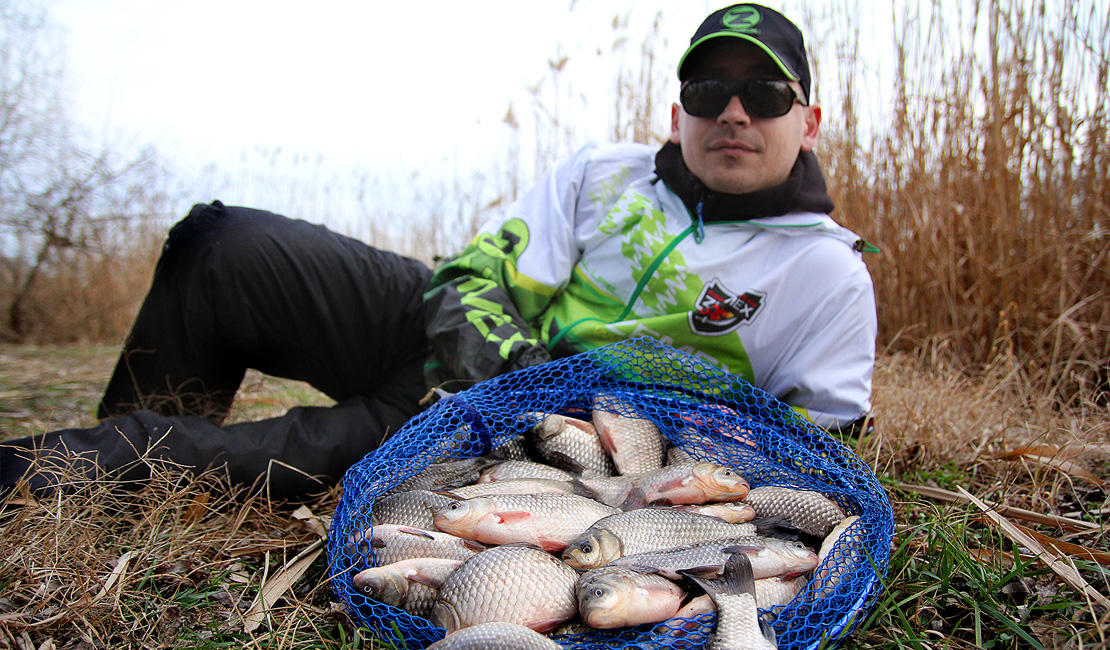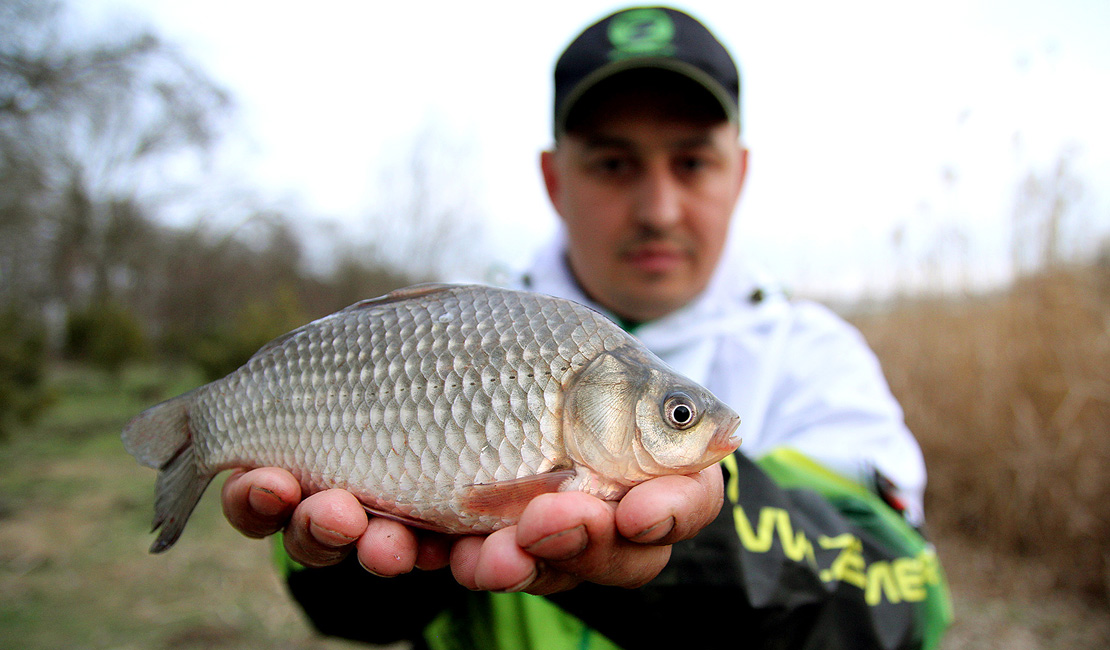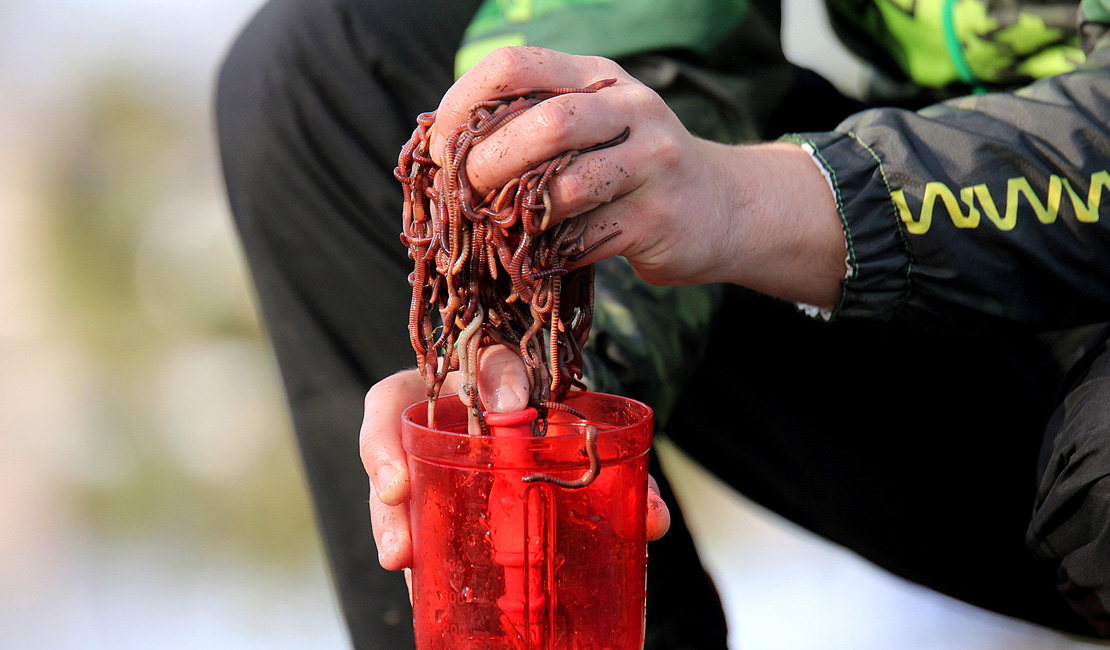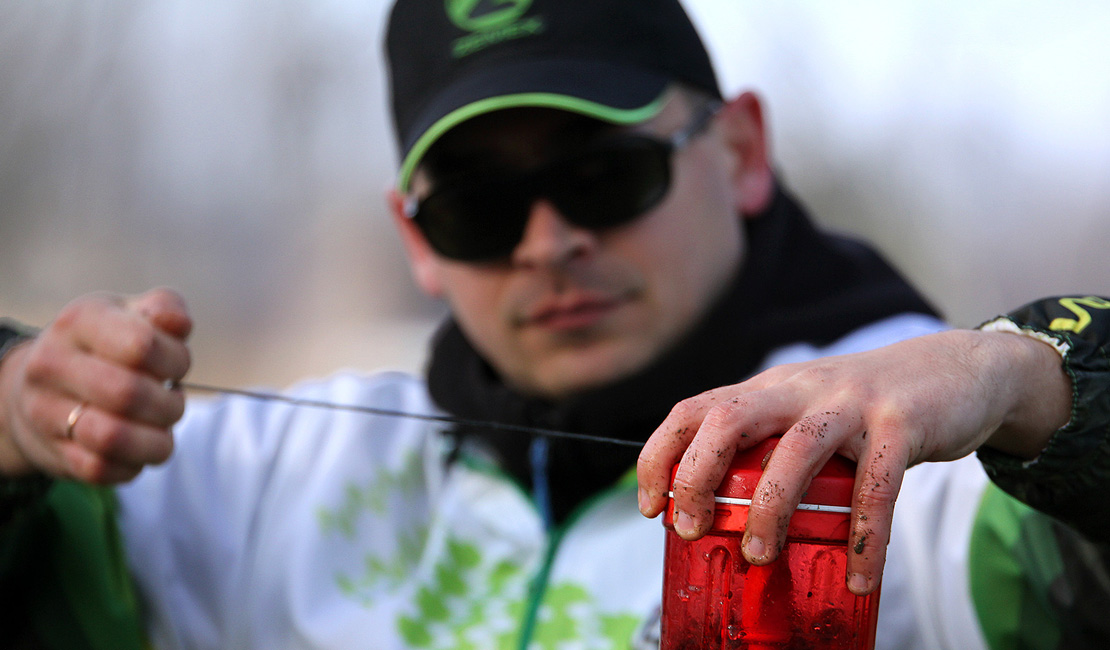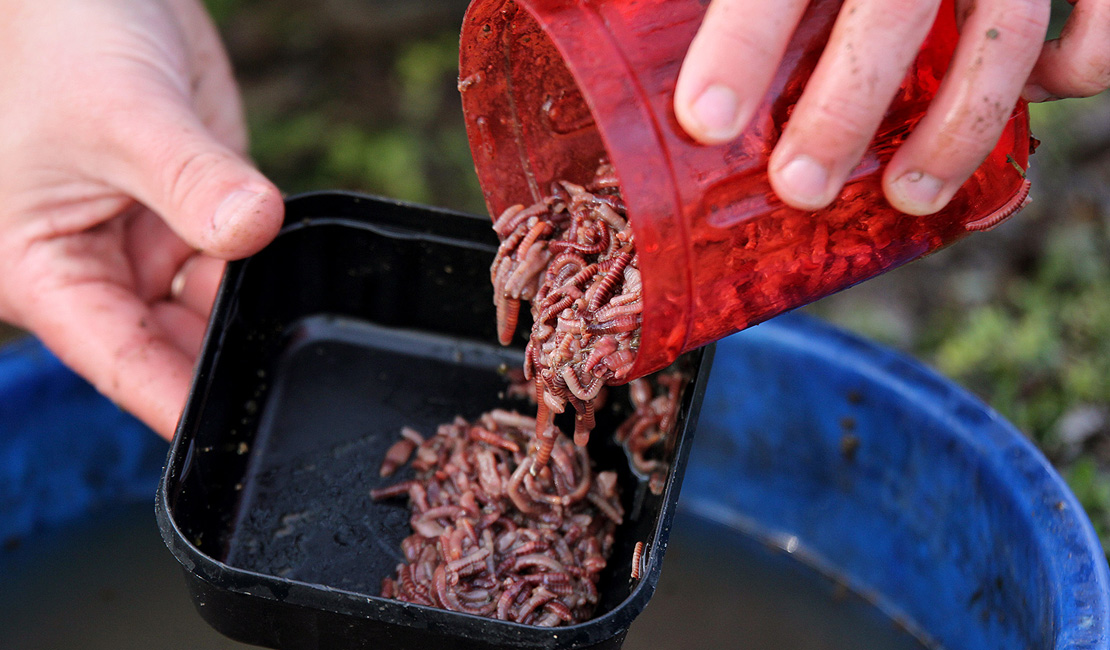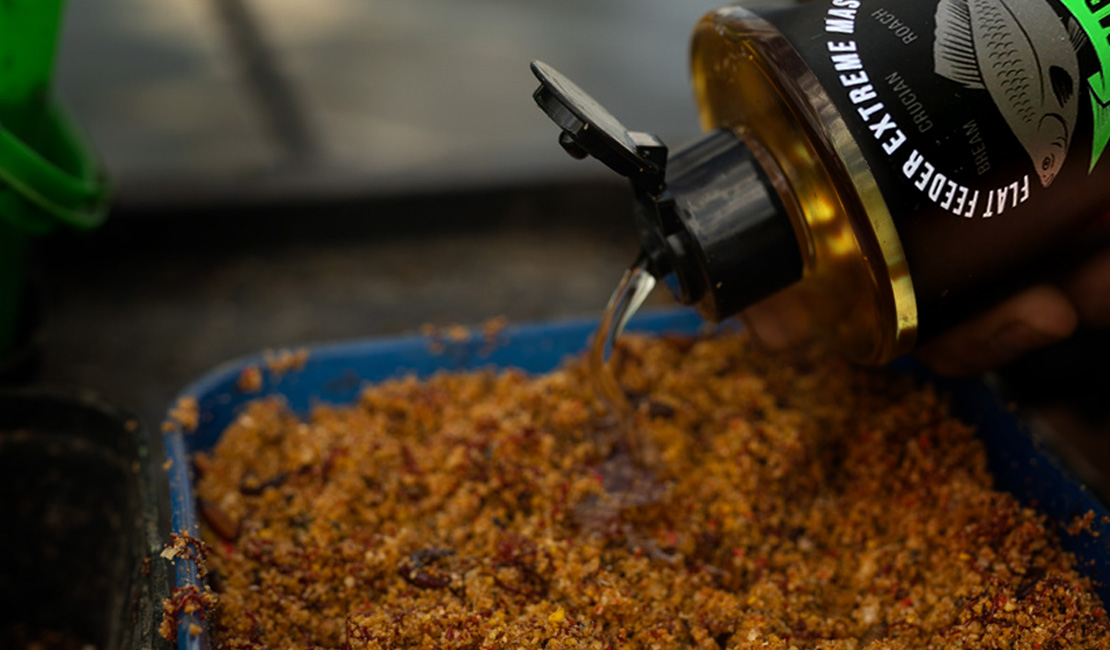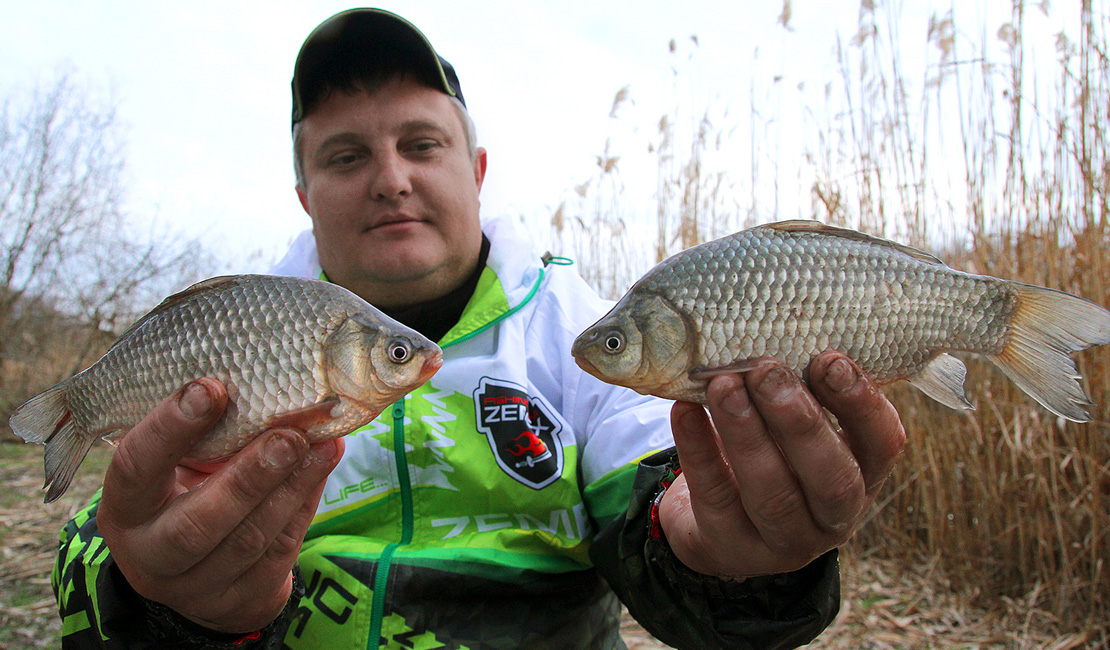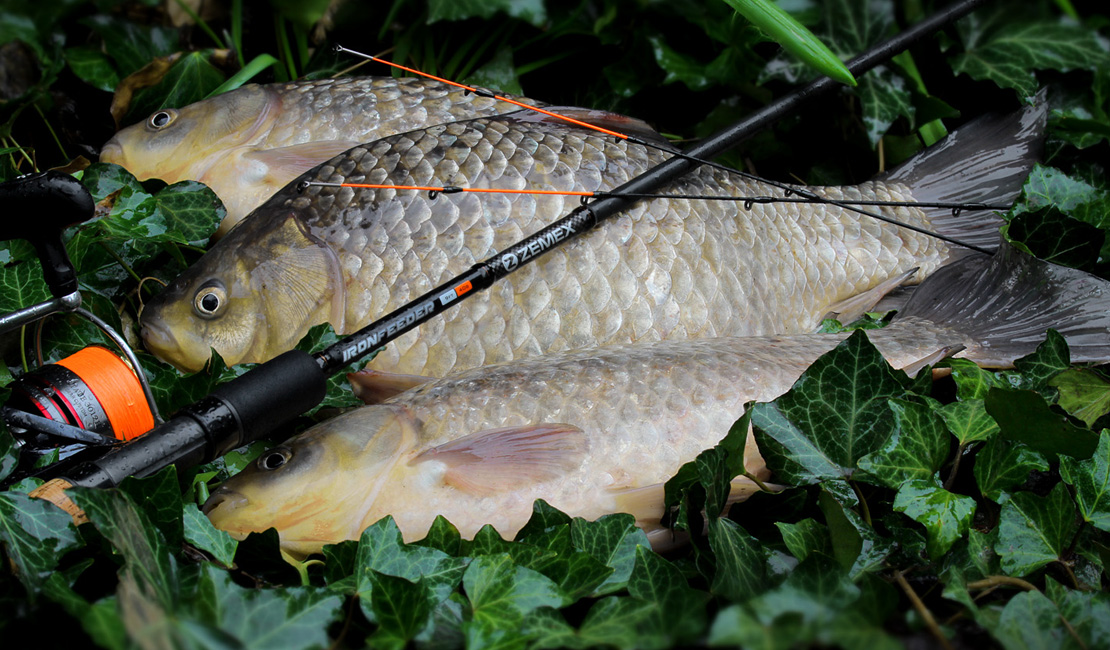Crucian is one of the most widespread fish in the moderate climate zone. It lives in ponds, reservoirs and rivers with a weak current and becomes a frequent guest when fishing with various tackles. Today we will talk about effective and very interesting crucian fishing on the feeder. Crucian is a bottom fish of the cyprinoid fishes that can be caught both with baits of plant and animal origin. This allows the feeder angler to use various tactics for feeding this fish.
Going to crucian fishing, first of all you need to choose a feeder rod. Crucian is a strong fish, so it is better to choose a rod with a good margin of power. Depending on the fishing conditions, you may need a rod with a length of 3.60 or 3.90 meters. Today we will consider two specific models that are well suited for carp fishing.
The first is the ZEMEX Iron Feeder 12ft – 90g. a Classic medium-class rod with a fast action and a good reserve of blank power. It is perfect for small ponds where the crucian keeps at short and medium distances. Thanks to its action, even a novice angler can easily cast the rig into the selected fishing spot. On large reservoirs, crucians often live at a decent distance from the shore. In this case, it is better to use a rod with a length of 3.90 meters, which will allow you to fish at long distances. ZEMEX Iron Feeder 13ft-100g is perfect for catching crucian in these conditions.
Crucian fishing in small reservoirs has a number of features that should be taken into account by the angler. On warm days, crucian prefer to stay in shallow areas, near thickets of underwater vegetation. To successfully fish in such places, you need to carefully examine the bottom structure. The rig should lie on a clean section of the bottom , but as close as possible to the crucian shelter.
To lure out accurate crucian, the angler needs to feed the selected fishing place efficiently. Bait for crucian is better to choose with bright sweet and fruity fumes. To keep the fish at the spot, it is recommended to add a large fraction of the bait in the form of various grains: pearl barley, millet, corn, and others. The use of animal components will also have a positive effect on attracting crucian. Maggot, blood worm and Cutworm will significantly enrich the spot. Before cutting the worm, it must be thoroughly washed. It is best to use a dung worm, to which the crucian is particularly partial.
Crucian is a cautious fish, so for a long time it can spin around near a well- fed place before it starts to feed. That is why the angler must make a starting feed, and then keep a low rate of casting. On shallow reservoirs, it is better to use small feeders that do not create unnecessary noise when falling into the water. To catch a large tricky crucian, the angler needs to be patient. Crucian, like most fish of cyprinoid fishes, have a very developed sense of smell. To speed up biting , it is useful to flavor the bait.
Liquid additives and boosters in most cases show good results when fishing for crucian. Strawberries, plums, and pineapple are considered good summer fruit flavors. In spring and autumn, almond, vanilla and chocolate flavors are a priority. As bait in the warm season, you can use a worm, a bunch of maggots, a couple of grains of pearl barley, or a single grain of corn. Often combination attachments, called in the common people – "sandwich", bring long-awaited bites. Crucian can change their taste preferences during the day, so it is better for the angler to have several options of baits to choose the one that will show the best result. The hook is best selected based on the size of the bait. In most cases, it is necessary to use large bait that better attract large crucian. Based on this, the most suitable hooks are 10-12 numbers according to the European classification. Crucian are a fairly strong opponent and imposes a powerful struggle during the fight with the fish. Novice anglers are recommended to use mono-fishing line as a base. It well dampens fish jerks and allows you to avoid breaking the hookline or fish run off.
In the case of using a braided line, it is not superfluous to add an element such as a feedergum to the rig, which will also reduce the load on the hookline. The diameter of the hookline line can vary from 0.1 to 0.16 mm, depending on the season and fishing conditions. Crucian fishing with a feeder is very informative. Before swallowing the bait , the sly crucian tries it several times and spits it out. All these underwater manipulations are clearly transmitted to the quivertip and the fisherman is already aware of the presence of fish on the point.
If the fish has not made a confident bite , it makes sense to think about changing the bait or flavor. Very useful is fishing with a slack line, when the angler completely eases off the quivertip. The fish will stop feeling the tension, and will more likely swallow the bait. Feeder fishing for crucian – it's gambling and in some measure an intellectual thing. High- quality fishing gear along with constant fishing experiments will definitely help You become a winner in the confrontation with this tricky and beautiful fish.
Tell your friends about us:

